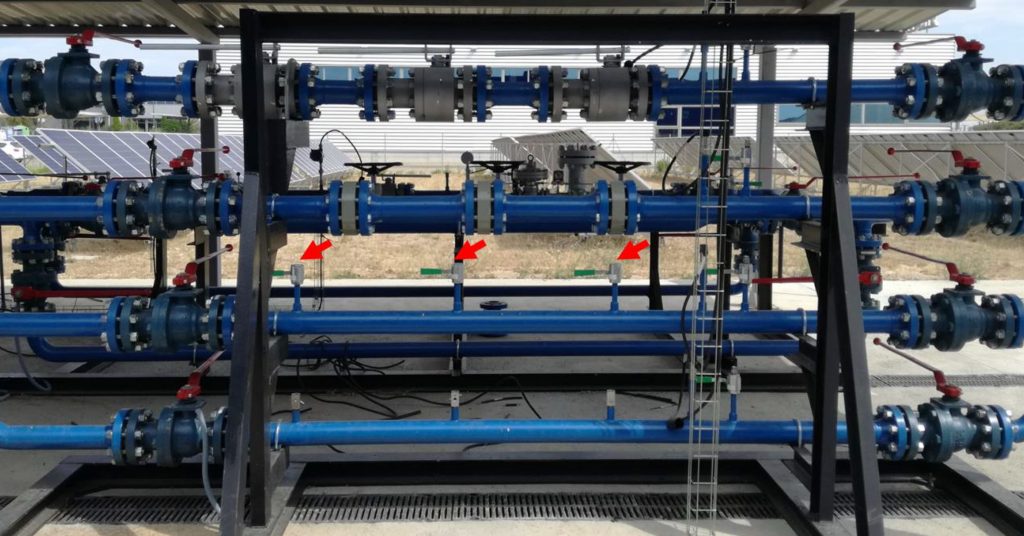D4.3 - Update of the status of the ongoing experimental campaign.
Impact of blends of hydrogen up to 30 mol% on the transport grid assessed
Impact of hydrogen on steels, couplings and elastomers
Tightness of components towards the blend studied
Deliverable D4.3 gathers the results obtained in the different tests performed during the 2nd and 3rd experimental campaigns, carried out in the R&D testing platform built in WP3 at Fundación Hidrógeno Aragón (FHA). This R&D facility aims to reproduce a natural gas transmission grid at smaller scale, where different testing components, materials and equipment are exposed to hydrogen.
Four different kinds of tests have been performed on the platform during these two experimental campaigns:
- Gas tightness tests of representative valves of the natural gas (NG) grid to identify possible leakages when operated with hydrogen. D4.2 already collected the results of the gas tightness tests of the valves from the 1st and 2nd campaigns. D5.3 shows preliminary tests of the third campaign.
- Constant displacement tests carried out on API 5L steel specimen’s grades X42, X52, X60 and X70, for hydrogen embrittlement evaluation of representative carbon steels in the NG grid. D4.3 collects the results from the 2nd and 3rd experimental campaign.
- Inspection of equipment (pilot-operated pressure regulator and cartridge filter) components from the dynamic section after the 2nd campaign, for hydrogen damage evaluation.
- Inspection of components of the valves in the static section for hydrogen damage evaluation.

D4.3 collects the results obtained from the inspection of the valves after the 2nd campaign together with the characterization of the screwed ball valve which presented a gas leakage after the emptying and inertization process at the end of the 2nd campaign.
These valves are the same used as testing items in the gas tightness tests described above. The 2nd experimental campaign consisted of the 20/76 (%/%mol) H2/CH4 blend gas condition, with H2S up to 11 ppmv and CO2 (4 mol%) as impurities. These amounts correspond to the maximum concentration of these impurities in NG according to the current regulations in Germany and Spain. The gas mixture for the 3rd campaign was made up of 30/66 (mol %/%) H2/CH4 with the same concentration of impurities as those contemplated for the 2nd campaign. Test pressure for both experimental campaigns was 80 bar, with a duration of 2300 hours for the 2nd campaign and 2100 hours for the 3rd campaign.
No cracks or other kind of damage were found on the valves and parts of the equipment exposed to the 20/76 (mol%/%) H2/CH4 blend. The C-ring, 4pb and CT-WOL specimen’s machined from the API5L steel pipes grades X42 to X70 did not show cracking or precrack growth after testing in the 20/76 and 30/66 (mol%/%) H2/CH4 blends with H2S and CO2 impurities. Therefore, in the tests to evaluate the compatibility of the steels using constant deformation specimen’s no signs of embrittlement were observed for the 2nd and 3rd experimental campaigns.
The results of the 3rd campaign are still preliminary, but a critical gas loss could be already detected for screwed ball valves, which may make them not suitable for hydrogen service with 30 mol% blends. The possibility of gas stratification must be monitored during the final period of the test.

